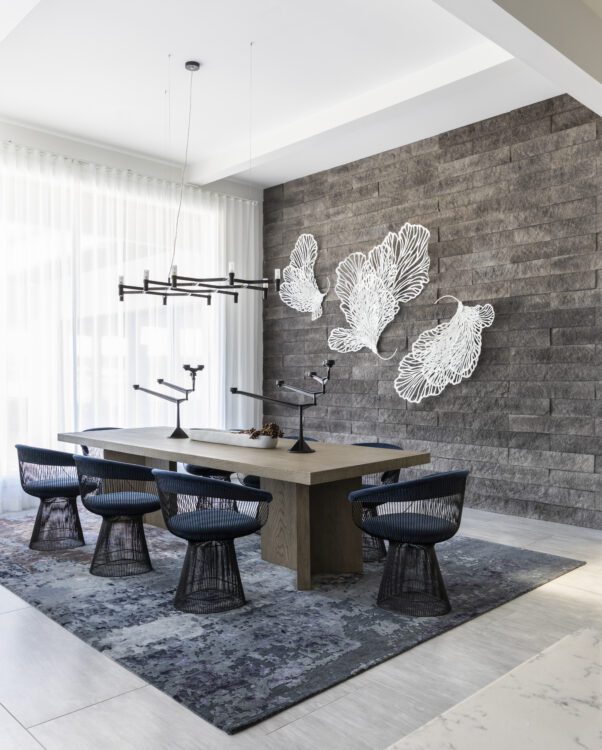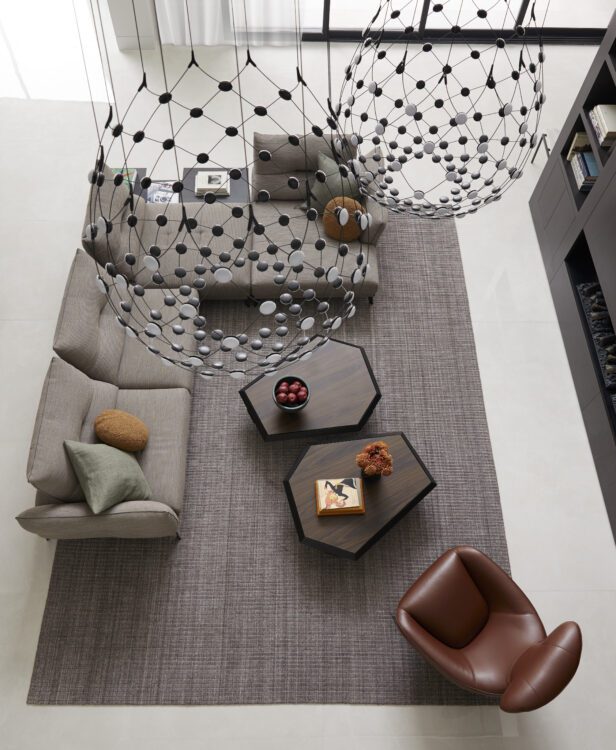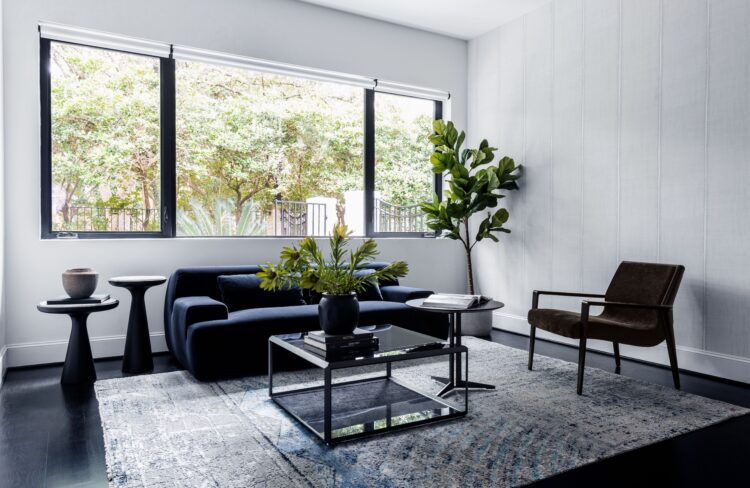I. Introduction
Rugs play a vital role in interior design, adding warmth, texture, and personality to a room. They have the power to tie together various elements, create visual interest, and define distinct areas within a space. However, choosing the right rug size is crucial to ensure a harmonious and well-proportioned room design. In this article, we will explore the question, “When is a rug too big for a room?” and delve into the factors that determine the perfect rug size for your space.
Importance of Rugs in Interior Design
Rugs are more than just floor coverings; they are design elements that can transform the look and feel of a room. They provide comfort underfoot, absorb sound, and enhance the overall aesthetics. From cozying up a living room to defining a dining area, rugs have the power to make a significant impact on the ambiance and functionality of a space.
Overview of the Topic
Determining the appropriate rug size can be a challenging task, even for experienced interior designers. Many factors come into play, such as room dimensions, furniture placement, and desired visual effects. In this article, we will explore the key considerations that determine whether a rug is too big for a room, providing valuable insights to help you make informed decisions.
Introduce the Concept of a Rug’s Size Impact
The size of a rug can significantly influence the proportions and balance within a room. A rug that is too large may overwhelm the space, while one that is too small can make it feel disjointed. Achieving the perfect rug-to-room ratio is essential to create a harmonious and visually pleasing environment. In the following sections, we will examine the impact of rug size on room proportions, practical considerations to keep in mind, and signs that indicate a rug is too big for a room.
With this introduction, we set the stage for the article, highlighting the importance of rugs in interior design and the significance of choosing the right size. The readers will be intrigued to explore further to learn about the impact of rug size and how to avoid the pitfalls of choosing an oversized rug.
II. Understanding Rug Sizes
- Common rug sizes available
When it comes to rug sizes, there are several common options to choose from. These sizes are often available in stores and online retailers, making them more accessible for homeowners. Common rug sizes include small accent rugs (2’x3′ or 3’x5′), medium-sized rugs (5’x8′ or 6’x9′), and larger area rugs (8’x10′ or 9’x12′). Understanding these standard sizes can serve as a starting point in determining the appropriate rug dimensions for your room.
- How rug sizes are measured
Rug sizes are typically measured in feet, using length and width dimensions. The dimensions of a rug refer to the area it covers on the floor. For example, an 8’x10′ rug covers 8 feet in width and 10 feet in length. It’s important to note that rug sizes can vary slightly due to manufacturing processes, so it’s advisable to measure the actual rug before making a purchase.
- Factors to consider when choosing a rug size
Selecting the right rug size involves considering various factors that go beyond mere room dimensions. Key factors to consider include the room’s purpose, furniture placement, and the desired visual impact. For example, in a living room, you may want the rug to accommodate the seating area and create a cohesive space. In a bedroom, the rug should extend beyond the bed to provide comfort when stepping out. By taking these factors into account, you can ensure that the rug size complements the overall room design and serves its intended purpose.
Understanding rug sizes is crucial as it forms the foundation for choosing the appropriate rug dimensions. By being aware of common sizes, how they are measured, and the factors that influence their selection, homeowners can make more informed decisions when it comes to selecting a rug that fits their space perfectly.
Next, we will delve into the impact of rug size on room proportions, helping readers understand how the dimensions of a rug can affect the overall balance and visual appeal of a room.
The Impact of Rug Size on Room Proportions
Rug size in relation to room dimensions
The size of a rug has a direct impact on the proportions of a room. A rug that is too small in relation to the room’s dimensions can make the space feel disconnected and visually disjointed. On the other hand, an oversized rug can dominate the room and throw off its balance. It’s important to strike a balance between the rug size and the overall dimensions of the room to create a visually pleasing and well-proportioned space.
Balancing rug size with furniture placement
One key consideration when choosing a rug size is how it relates to the placement of furniture within the room. Ideally, the rug should anchor the furniture and define the area. In a living room, for example, the front legs of sofas and chairs should rest on the rug to create a cohesive seating arrangement. If the rug is too small, the furniture may feel disconnected, and the room may lack a sense of unity. By selecting a rug that properly accommodates the furniture, you can achieve a balanced and harmonious arrangement.
Creating visual harmony with the right rug size
The size of a rug can also influence the visual harmony of a room. A rug that is too large for the space may overpower other design elements, such as artwork or accent pieces. Conversely, a rug that is too small may get lost amidst the surrounding furnishings, failing to make a significant impact. By carefully considering the rug size in relation to the room’s dimensions, you can create a visually appealing composition where all elements complement each other and contribute to a cohesive design.

Understanding the impact of rug size on room proportions is crucial for achieving a well-balanced and visually pleasing interior. By ensuring that the rug size is in harmony with the room’s dimensions, furniture placement, and overall design aesthetic, you can create a space that feels cohesive, welcoming, and visually balanced. In the next section, we will explore practical considerations when it comes to choosing the right rug size for a room.
Practical Considerations for Rug Size
Clearing pathways and furniture functionality
When selecting a rug size, it’s essential to consider the practical aspects of the room. Ensure that the rug allows for clear pathways and doesn’t obstruct the flow of movement. The edges of the rug should be positioned in a way that allows for easy navigation around furniture. Additionally, consider how the rug will affect the functionality of the furniture. For instance, in a dining room, ensure that the rug is large enough to accommodate chairs even when they are pulled out from the table.
Rug size in high-traffic areas
High-traffic areas such as entryways, hallways, or family rooms require rugs that can withstand heavy use. In these areas, it’s important to choose a rug size that covers the main traffic path effectively, providing both comfort and durability. Opting for a slightly larger rug can help prevent wear and tear, as it distributes the foot traffic more evenly across the surface.
Proper rug placement in open floor plans
In open floor plans where multiple areas flow seamlessly into one another, rug placement becomes crucial. Consider using rugs to define different zones within the open space. In such cases, it’s recommended to choose rugs that are proportional to the size of each specific area, ensuring that they contribute to a sense of cohesion while maintaining distinct boundaries between spaces.


Practical considerations are key when it comes to selecting the right rug size. By ensuring that the rug allows for clear pathways, takes into account furniture functionality, and is appropriate for high-traffic areas, you can optimize both the practicality and longevity of the rug. Additionally, in open floor plans, thoughtful rug placement can help create functional zones within the larger space.
Next, we will explore the visual effects of oversized rugs and how they can impact the overall aesthetics of a room.
V. Visual Effects of Oversized Rugs
- Overwhelming the room’s aesthetics
When a rug is too big for a room, it can overpower the space and dominate the visual landscape. Oversized rugs can draw excessive attention and become the focal point of the room, overshadowing other design elements such as furniture, artwork, or architectural features. This imbalance can disrupt the overall aesthetic harmony and make the room feel visually overwhelming.
- Making the room appear smaller
An oversized rug can create an illusion of a smaller space. When the rug extends beyond the appropriate boundaries, it can visually shrink the room and make it feel cramped. This effect is particularly noticeable in smaller rooms where every inch of space counts. Choosing a rug that is proportionate to the room’s dimensions can help maintain an open and spacious feel.
- Challenges with coordinating other decor elements
An oversized rug can pose challenges when it comes to coordinating other decor elements in the room. It may limit the options for furniture placement and hinder the arrangement of other accessories or accent pieces. Moreover, finding complementary patterns, colors, or textures that work harmoniously with an oversized rug can be more challenging, potentially impacting the overall design cohesiveness.
Considering the visual effects of oversized rugs is crucial in creating a well-balanced and aesthetically pleasing room. By avoiding rugs that overpower the space, make it appear smaller, or pose challenges in coordinating other decor elements, you can ensure that the rug enhances the overall design without overwhelming it.
In the next section, we will discuss signs that indicate a rug is too big for a room, providing practical insights to help homeowners make informed decisions about rug sizes.
VI. Signs that a Rug Is Too Big for a Room
- Covering too much of the flooring
One of the obvious signs that a rug is too big for a room is when it covers a significant portion of the flooring, leaving only small gaps visible around the edges. This excessive coverage can make the room feel visually cluttered and hinder the appreciation of the underlying flooring material. If the rug extends too far beyond the furniture arrangement, it may be an indication that a smaller size would be more appropriate.
- Obstructing architectural features
When a rug is too big, it can cover or obstruct architectural features such as baseboards, intricate tile patterns, or interesting floor designs. These unique features add character and charm to a room, and hiding them under an oversized rug diminishes their visual impact. If the rug masks or detracts from the architectural elements, it’s a sign that a smaller rug size should be considered.
- Hindering furniture arrangement options
Another sign that a rug is too big for a room is when it limits the flexibility of furniture placement. If the rug occupies too much space, it can restrict the arrangement of furniture, making it difficult to achieve an ideal seating or layout configuration. Furniture may end up feeling cramped or floating awkwardly in the room, detracting from the overall functionality and comfort. Opting for a more appropriately sized rug will provide more flexibility in furniture arrangement.
Identifying these signs can help homeowners recognize when a rug is too big for a room. By paying attention to the extent of floor coverage, the obstruction of architectural features, and the limitations on furniture placement, one can make a more informed decision and choose a rug size that enhances the room’s aesthetics and functionality.
In the next section, we will discuss practical guidelines for achieving the right rug-to-room ratio and provide additional insights on rug layering and custom-made options.
VII. Achieving the Right Rug-to-Room Ratio
- Guidelines for choosing the ideal rug size
To achieve the right rug-to-room ratio, it’s helpful to follow some general guidelines. In a living room, for example, aim to have the front legs of sofas and chairs resting on the rug while leaving enough space behind for the back legs. This creates a cohesive seating area while maintaining a balanced visual proportion. In dining rooms, ensure that the rug extends beyond the table and chairs when they are pulled out, allowing for comfortable movement and avoiding a cramped appearance.
- Utilizing rug layering techniques
Rug layering can be a creative way to achieve the desired rug-to-room ratio and add depth to the design. By layering smaller rugs on top of a larger foundational rug, you can create visual interest and define specific areas within a room. This technique works well in open floor plans or large spaces where you want to delineate different zones while maintaining a cohesive overall design.
- Considering custom-made rug options
In some cases, standard rug sizes may not perfectly fit your room’s dimensions or design vision. In such instances, considering custom-made rugs can be a great option. Custom rugs allow you to choose the exact dimensions that best suit your space, ensuring a perfect fit and optimal rug-to-room ratio. Working with a rug designer or manufacturer, you can select the materials, patterns, and colors that align with your interior design aesthetic and create a truly unique and tailored rug.
By following guidelines for rug size selection, exploring rug layering techniques, and considering custom-made options, you can achieve the right rug-to-room ratio that enhances the overall aesthetics and functionality of your space. Finding the perfect balance between the rug size, furniture arrangement, and room dimensions will create a visually pleasing and harmonious interior.
In the concluding section, we will recap the importance of rug size in room design and emphasize the significance of balance and proportion.
VIII. Conclusion
Choosing the right rug size is a crucial aspect of interior design, as it directly impacts the proportions, balance, and overall aesthetics of a room. Understanding the impact of rug size on room proportions allows homeowners to create harmonious and visually appealing spaces that are both functional and visually pleasing.
Throughout this article, we have explored various aspects of rug sizing, from understanding common rug sizes and how they are measured to practical considerations for choosing the right size for your room. We discussed the visual effects of oversized rugs and the signs that indicate when a rug is too big for a room. Additionally, we highlighted the importance of achieving the right rug-to-room ratio and provided insights into rug layering and custom-made options.


By considering factors such as furniture placement, room dimensions, and the desired visual impact, homeowners can make informed decisions when selecting a rug size. Striking a balance between the rug size and the overall room dimensions ensures that the rug enhances the space rather than overwhelming it. Clear pathways, proper furniture functionality, and coordination with other decor elements are practical considerations that contribute to a well-designed room.
Remember, achieving the right rug size is not a one-size-fits-all approach. It requires careful consideration of the specific room and its unique requirements. By following guidelines, exploring creative layering techniques, and considering custom-made options, you can create a space that reflects your personal style and meets your design goals.
In conclusion, when it comes to rugs, size matters. By choosing the right rug size, you can transform your room into a visually captivating, harmonious, and inviting space that reflects your style and enhances your overall living experience.
Happy rug shopping and may you find the perfect size for your room!
